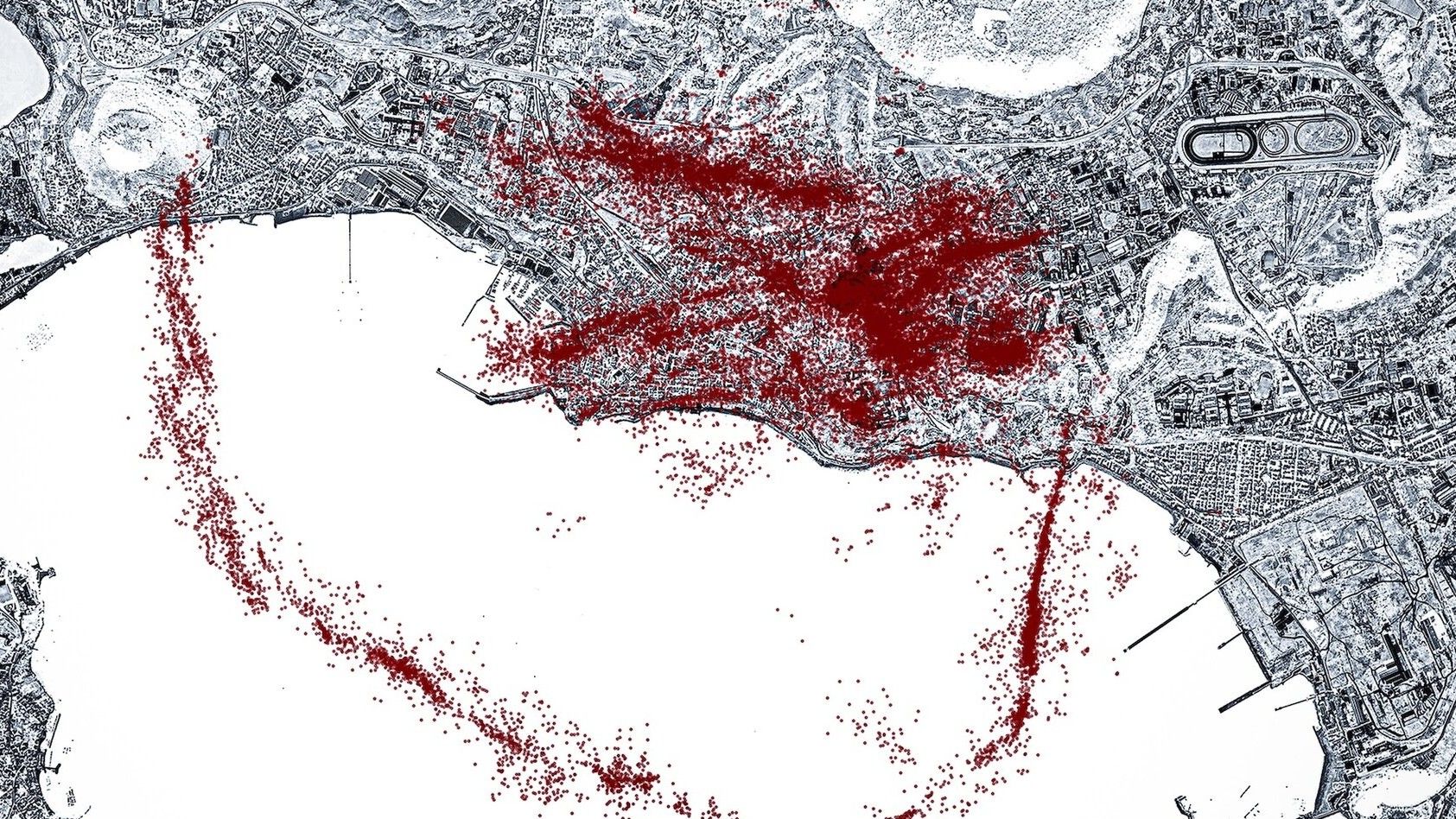An artificial intelligence (AI) model has revealed never-before-seen geological structures at Italy’s Campi Flegrei volcano, including a clear “ring fault” that could unleash magnitude 5 earthquakes.
So far in 2025, Campi Flegrei has produced five earthquakes above magnitude 4, and the volcano has been showing signs of unrest since 2005. But most of the earthquakes triggered in the region are going undetected, according to a new study that used AI to pinpoint tens of thousands of seismic events that have gone under the radar over the past few years.
Over the past 40,000 years, Campi Flegrei has produced two of the largest eruptions in Europe, and evidence suggests the volcano’s earlier history was just as explosive. Scientists have been recording unrest at Campi Flegrei since the 1950s, but monitoring efforts increased in the 1980s after a swarm of 16,000 earthquakes prompted the evacuation of 40,000 residents.
To investigate modern threats from Campi Flegrei, Ellsworth and his colleagues developed an AI tool capable of identifying earthquakes that previous methods couldn’t pick out.
Traditionally, seismologists identify earthquakes by analyzing seismograms, which are graphs with wiggly lines that represent shaking in the ground over time. Researchers look for a sudden increase in the wiggles’ size, and this process is known as “phase picking,” said study co-author Greg Beroza, a professor of geophysics at Stanford University.
“That’s a simple and often effective means of picking a phase, but it doesn’t ‘learn’ how to do it better so that it improves with time,” Beroza told Live Science in an email. “In our approach, we train a machine learning model to pick phases. We base it on the collection of millions of examples where experts have done this already, and our method is designed to learn how to do this more effectively.”
The team chose to have their tool analyze Campi Flegrei before other volcanoes for several reasons, including there being an urgent need to better understand this volcano’s behavior, Beroza said. More than 360,000 people live inside Campi Flegrei’s 7-mile-long (11 kilometers) caldera, and roughly 1.5 million people reside in the wider area. Unrest over the past 20 years ticked up in 2018 — and while there are currently no signs of an eruption, a particularly violent or shallow earthquake could present a huge danger to people as well as damage buildings, according to the statement.
The results from the AI tool, published Sept. 4 in the journal Science, reveal that three-quarters of earthquakes at Campi Flegrei between 2022 and mid-2025 went undetected. While traditional methods documented 12,000 earthquakes in this period, AI shows the number was closer to 54,000.
By mapping the location of these earthquakes, the researchers discovered faults — cracks in Earth’s crust that can grind against each other and cause earthquakes — that previous methods hadn’t highlighted. Notably, the team found two faults converging beneath Pozzuoli, a town west of Naples where evacuations took place in the 1980s. The location of these faults suggests “an earthquake in the magnitude 5 range is not out of the question,” Ellsworth said.
This wasn’t the only striking finding. Pozzuoli experienced uplift in the 1980s, and the same is happening again now, with the ground beneath the town rising by about 4 inches (10 centimeters) each year. It turns out, the area of uplift is encircled by several faults, forming a thin, well-marked “ring fault” that extends offshore, according to the statement.
“Our Italian colleagues were surprised to see the ring so clearly,” study lead author Xing Tan, a doctoral student in Beroza’s lab, said in the statement. “They expected to see something in the south where previous data had revealed scattered seismicity, but in the north, they’d never seen it so clearly.”
Seismic activity along the ring fault could help predict changes in the system, as well as hint at the magnitudes of future earthquakes, Beroza said. But it doesn’t provide new information about the likelihood or timing of Campi Flegrei’s next eruption.
“All the analyzed seismicity from 2022 to mid-2025 is shallow, at depths above 4 kilometers (2.5 miles) and does not indicate any migration of magma towards the surface,” Beroza said.
The team’s results for Campi Flegrei indicate that the AI tool could be useful for other volcanoes, too. Places that have recently seen an uptick in seismic activity, such as Santorini in Greece, could benefit from a clearer understanding of the underlying geology, the researchers said in the statement.
